Take a dip in the signature Taki dishes tourisim
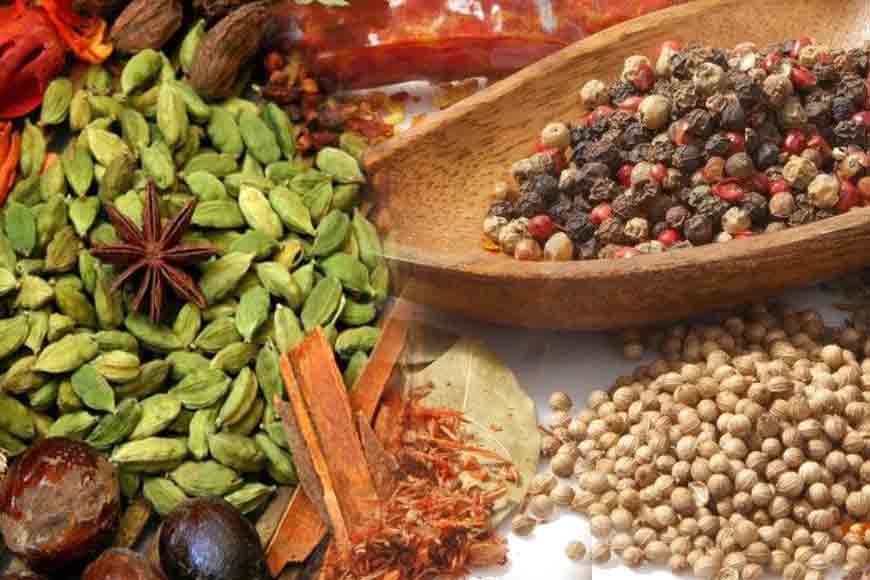
A member of the erstwhile Taki zamindar family, Sunanda Bose is also a human rights activist and a passionate cook
Every region has its specific signature cuisine. Taki is such a locale of Bengal that acts as a buffer zone between West Bengal and Bangladesh. Located on the Ichhamati river whose two banks represent the quintessential Ghoti and Bangaal divide, Taki has some of the most well-known and best kept secret recipes of Bengal. Taki cuisine is a mixture of both Ghoti and Bangaal tastes, bearing a distinctive flavour of its own. Taki is famous for both non-vegetarian as well as vegetarian dishes. One would expect Taki residents to be mostly fish eaters, as it is also the Gateway to Sundarbans.
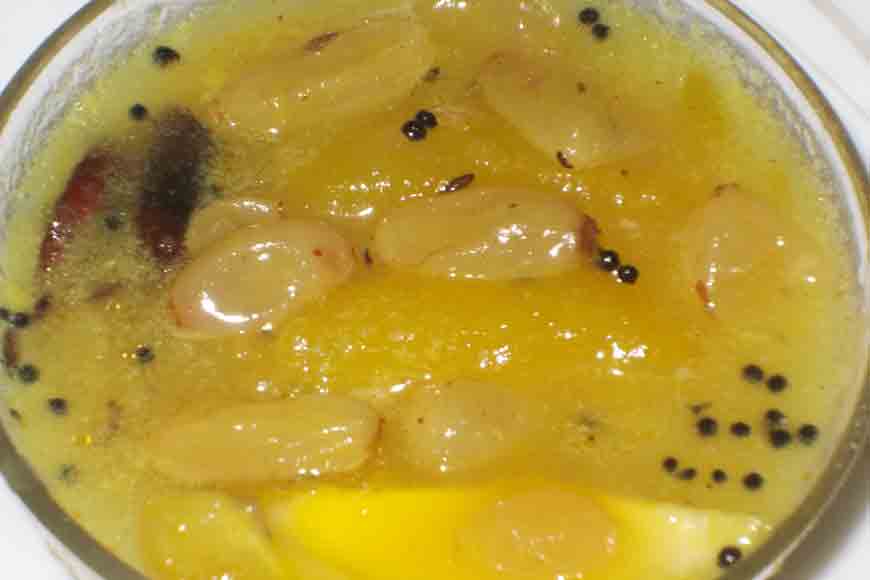
However, simple and bland vegetarian dishes with no spices or very little spices were very popular as Taki society was conservative and women, specially widows observed all Bratas such as Shasti, Itu Puja, Bipattarini, Shiva Ratri and fasts during Purnima, Amavasya, Ekadashis, round the year. Practically every household had widows including child widows who had to have strict vegetarian food, without onions or garlic. Thus, every Taki household had two kitchens -Habishhi (vegetarian) kitchen and the Amish (non-vegetarian) kitchen. The utensils of the two kitchens were also separate. In ordinary households, widows managed the Habishi Ghar and women whose husbands were alive managed the Amish kitchen. In affluent Zamindar houses, there were separate cooks (mostly Oriya Brahmins) for each kitchen.
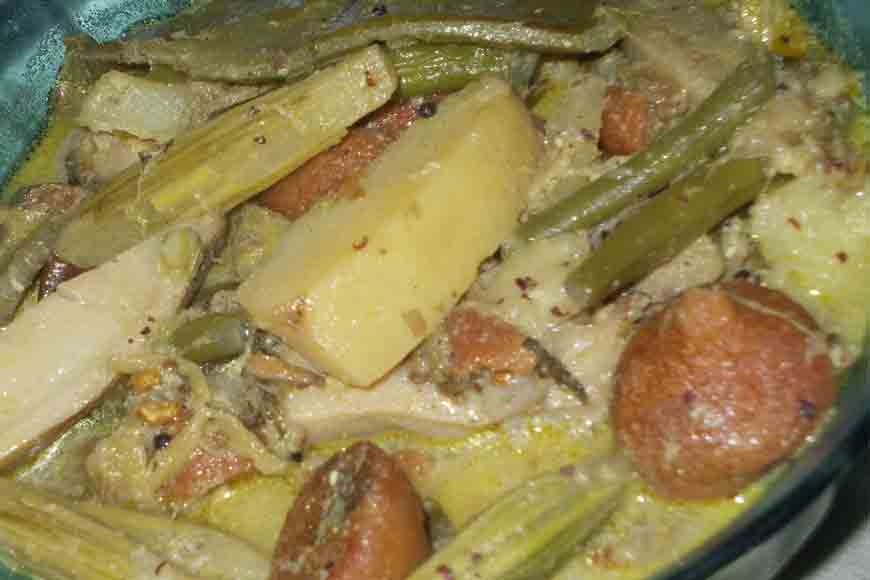
At the Habishi Ghar at least one vegetarian daal, one bitter dish like Shukto, two to three vegetables, a fried vegetable and Chatni or Aumbole were part of the daily menu. On Ekadashi and Brata days, rice would not enter this kitchen but luchi and paratha would be prepared. People of Taki are sweet-toothed unlike their fore fathers and cousins across the river. The spices used were mainly Hing (Asafoetida), Jeera (Cumin), Dhania (Coriander), Mouri (Saunf), Panch Phoran, Garam Masala (Choto Elach, Dalchini, Labanga), Tejpata, Mustard seeds, Randhuni. Ghee was used liberally. There was a special spice mixture prepared in many Taki households till seventies and early eighties. This was known as Gota Masala, that were prepared at Taki in the beginning of summer just like Kasundi was.
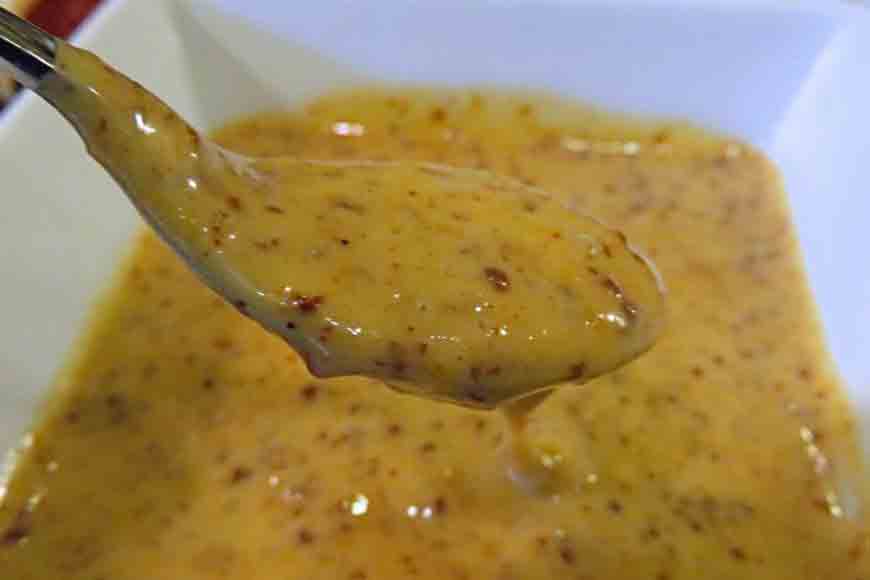
For Gota, various whole spices were cleaned, washed, dried in the sun. Then on an auspicious day the Dhenki was worshipped and women after bathing would pound the masalas in the Dhenki. Kasundi would also be prepared in the same way pounding raw mangoes and mixing its pulp with tamarind pulp and mustard powder. The entire process was ritualistic like Achar preparation and Bori making. Medinipur is famous for its Gayna Bori, but this special ornamental bori was common in most Taki households. During winter sending Bori and Patali Gur to the married daughter’s residence was a must. Another favourite Bori was KatBael or small Wood apple Bori. The pulp of Katbael was taken out and strained to remove all seeds. Then mustard oil, black salt, fried jeera powder, fried red chilli powder and sugar was added to it till it thickened to the Bori giving it consistency. Then tiny Boris were made and left to dry on an old clean cotton sari. On the third or fourth day when sufficiently dry, the cloth was hung by clips on a clothesline to help it to dry further.
The Gota was used in the vegetarian kitchen for making Shukto. Ghee was never added to a dish prepared with Gota Phoran. Mustard paste was a must. The only other spice added was ginger paste and very slight red chilli paste. All Shukto vegetables including raw banana, striped gourd, radish, brinjals, potatoes, sweet potatoes, drumsticks were cut into medium sizes. The bitter gourd were also cut thinly and fried slightly in mustard oil. All the vegetables were then sautéed in minimum possible oil with the ginger paste and set to boil with water. The fried Bori was added in the end. The right consistency of this simple curry with the subtle and distinct flavour and aroma of Gota makes it an unusual dish.
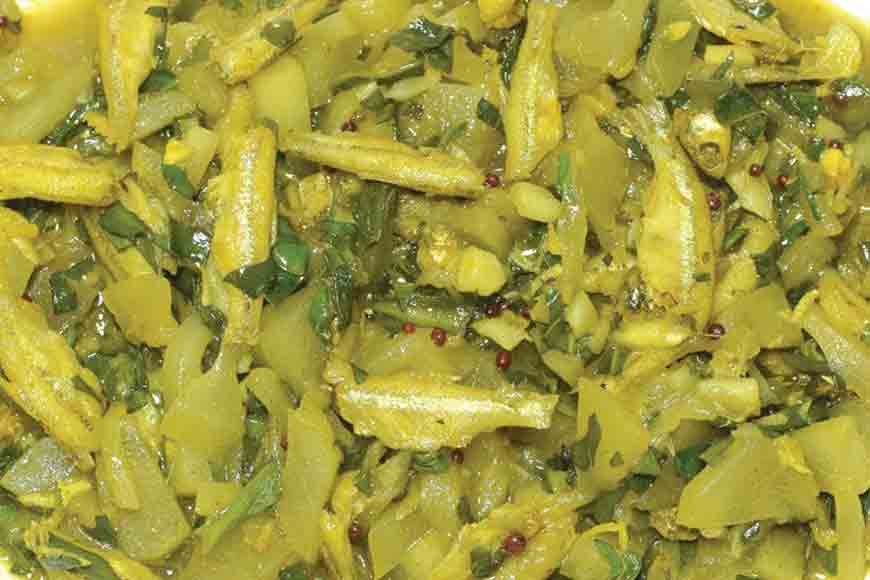
In the non-vegetarian kitchen the same dish is cooked as Gotar Jhol, an all-time favourite of Taki households. The same ingredients are used as for Shukto except the bitter gourd. Instead small fish like Mourala, lightly sauted, Pabda fish and small Parshe known as Towmach and smaller variety of the prawn known as Chapra or Honne Chingri are used. The fish must be absolutely fresh.










